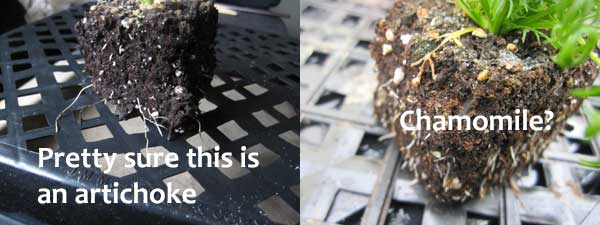This article contains affiliate links, and any purchases made through those links may result in a small commission.
We've been usng the Ladbrooke soil blocker for several years to jump start our seedling transplants, and have found the soil blocker has both advantages and disadvatages for seed starting. It's a great tool, but we're not quite ready to throw away our plastic cell packs just yet.
The soil blocker used in this review is the Ladbrooke 2" soil blocker.
Neutral: This is neither an advantage nor disadvantage, but it's often mentioned that the roots are automatically air-pruned once they reach the end of the soil block. No way. The roots just keep on going and will turn into as much of a tangle as the cell packs you buy at the garden center. Lettuce seedling roots were okay because they aren't in the soil blocks for long, but most other roots outgrew the soil block's boundaries well before it was time to transplant them outside. The soil blocks need at least 1/2" of space between the blocks to keep the roots at bay, but that made the soil blocks dry out much quicker so they needed watering every few days.

Would we buy it again? Absolutely! It probably sounds as though we're not happy with the soil blocker, but that's not the case. It just can't entirely replace the plastic cell packs just yet. The soil blocker is used mostly for the later succession plantings when it's warmer and the seedlings don't stay in the soil blocks as long. The plastic cell packs are used for the first main planting where the seedlings are in the cell packs for 8-12 weeks. Your seed starting setup is probably different than ours and the soil blocker may be all you need.
Here's a video showing how easy it is to use the Ladbrooke soil blocker to make soil blocks: